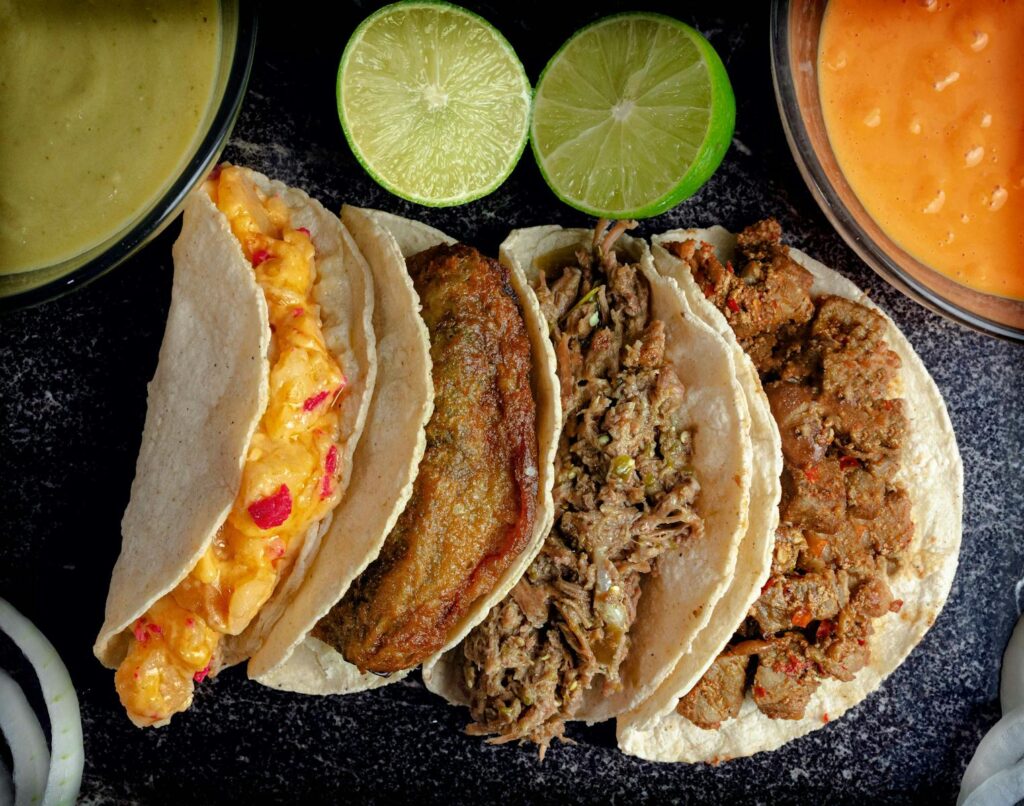Remember the days when coriander, also known as cilantro, was just another unassuming herb on the spice rack? Those days are long gone. Today, coriander stands as a culinary controversy, a leafy green enigma that has divided dinner tables and sparked heated debates among foodies and families alike. But why does this herb incite such strong reactions? And what does it taste like to those who don’t get a mouthful of suds with every bite?
The Genetic Basis of Coriander Taste
Let’s dive into the world of coriander and explore the experiences of those who are free from the soapy taste gene. For the uninitiated, coriander is a versatile herb that’s as likely to show up in a zesty salsa as it is in a fragrant curry. It’s the Clark Kent of the culinary world: mild-mannered and unassuming, but with a secret identity that can either save a dish or send it spiraling into the abyss of the inedible.
For some, coriander is the herb that brings a fresh, citrusy zing to their favorite dishes. They describe it as having a lemony or minty flavor that can brighten up even the most mundane meal. These are the lucky ones, the chosen few who can sprinkle coriander on their tacos without fear of a soapy surprise. To them, coriander is a superhero of flavor, swooping in to rescue bland food with its vibrant, verdant charm.
What about the rest of us? The ones who, as children, recoiled in horror at the taste of this seemingly innocent herb? For years, I counted myself among the coriander haters, convinced that even a single leaf could ruin an entire dish with its overpowering soapiness. It was a flavor I avoided at all costs, a taste that seemed more at home in a bubble bath than on my plate.
Something miraculous happened. As I ventured into my teenage years, my palate began to change. The soapy taste that once sent me running from the dinner table started to grow on me. It became a strange, yet alluring flavor that added a unique twist to my meals. Slowly but surely, I found myself joining the ranks of the coriander lovers, eagerly garnishing my dishes with handfuls of the once-despised herb.
This personal transformation led me to question my own taste buds. Had I been wrong about the soapy taste gene all along? Was I actually part of the genetic minority that finds coriander so distasteful? A recent TikTok deep dive only added to my confusion, as I watched people describe coriander in ways I had never imagined. Citrusy? Lemony? Minty? These were not words I would ever use to describe my experience with coriander. To me, it was still soapy, albeit in an oddly pleasant way, with a floral undertone that I had come to appreciate.
The revelation that others were tasting something completely different was mind-boggling. It was as if we were talking about two distinct herbs, not just one. How could it be that I was enjoying the same dishes as these people, yet experiencing coriander in such a radically different way?
The answer, it turns out, lies in the complex interplay between our senses of taste and smell, and the genetic lottery that determines how we perceive certain flavors. While coriander lovers bask in its fresh, citrusy notes, the rest of us are left to wonder what might have been if our genes had been dealt a different hand.

The Environmental and Cultural Influences on Coriander Taste
Before we delve into the science behind our divided palates, let’s take a moment to appreciate the culinary versatility of coriander. This herb has a knack for crossing cultural boundaries, making itself at home in a wide array of cuisines. From the bright, tangy flavors of Mexican salsas to the warm, spicy notes of Indian curries, coriander has proven itself to be a global citizen of the spice world.
Its ability to complement a variety of dishes is a testament to its complex flavor profile, which can range from zesty and refreshing to deep and aromatic. For those who taste the citrusy side of coriander, it’s an essential ingredient that can elevate a recipe from good to great. It’s the secret weapon in a chef’s arsenal, the final flourish that brings a dish to life.
As for me, I’ve come to embrace the soapy, floral taste of coriander as part of its charm. It’s a reminder that our individual experiences with food are as unique as our DNA, and that even the most divisive flavors can find a place in our hearts (and our stomachs) over time.
Whether you’re a coriander enthusiast or a reluctant convert like myself, there’s no denying the impact this humble herb has had on our culinary adventures. It’s a flavor that challenges us, surprises us, and ultimately brings us together in our shared quest for deliciousness. And isn’t that what food is all about?
Delving into the genetic intricacies of coriander perception, we find ourselves at the heart of a fascinating biological conundrum. The genetic basis of coriander taste is a complex tapestry woven from our individual DNA strands. It’s a story of sensory perception, where a single herb can taste like two entirely different entities to different people. For those without the so-called ‘soapy taste gene,’ coriander is a burst of freshness, a hint of citrus that dances on the palate with a lively, almost effervescent quality. It’s a flavor that’s both invigorating and comforting, reminiscent of a crisp morning breeze infused with the essence of lemon and mint.
To these fortunate individuals, coriander is a culinary chameleon, adept at complementing a myriad of dishes with its subtle yet distinct flavor. It’s the unsung hero in a bowl of guacamole, the secret ingredient in a Thai curry that leaves you wondering what that enchanting note is. It’s the green flecks in a Vietnamese pho that marry perfectly with the rich, aromatic broth. For coriander lovers, the herb is nothing short of a gastronomic delight, a green garnish that can transform the ordinary into the extraordinary.
What about those who have grown up in environments where coriander is not a staple? The genetic predisposition to dislike coriander may be less prevalent in regions where the herb is a cornerstone of the cuisine. This suggests that cultural exposure and repeated encounters with coriander can influence our taste preferences, potentially overriding our genetic inclinations. It’s a testament to the power of environment and experience in shaping our culinary landscapes.
The science behind this genetic divide is rooted in the olfactory receptors, particularly the OR6A2 gene, which is highly sensitive to the aldehyde compounds found in coriander. These aldehydes are also present in soaps and lotions, which explains why some people are genetically hardwired to associate the taste of coriander with the unpleasantness of soap. It’s a genetic quirk, a twist of fate that turns a beloved herb into a culinary villain for a subset of the population.
For those with a higher density of taste papillae and a greater concentration of certain protein receptors, coriander can taste overwhelmingly soapy or even rotten. It’s a sensory overload, a genetic lottery where the ‘winners’ are treated to a taste experience that is, to put it mildly, less than desirable. This genetic variation is a reminder of the diversity of human experience, a biological nuance that makes each of us unique in our perception of the world.
The discovery of the OR6A2 gene and its role in coriander taste perception is a breakthrough in understanding why this herb divides us so. It’s a window into the world of taste and smell, a glimpse into how closely these two senses are intertwined. The fact that a single nucleotide polymorphism can have such a profound impact on our taste preferences is a marvel of human biology.
The story doesn’t end with genetics. The environment also plays a crucial role in our taste perceptions. The number of cells that can identify each smell or taste is significantly influenced by the environment in which we grow up. This means that even if we have the genetic predisposition to dislike coriander, our environment can nudge us towards a different experience. It’s a beautiful interplay between nature and nurture, a dance between our genetic makeup and the world we live in.

The journey from coriander hater to lover, as experienced by some, is a testament to the malleability of our taste buds. It’s a reminder that our palates are not static but are capable of evolution and adaptation. The soapy taste that once repelled us can become a quirky, endearing quality that adds depth to our meals. It’s a culinary adventure, a voyage of discovery that challenges our preconceptions and opens us up to new gastronomic horizons.
The taste of coriander to those without the soapy taste gene is a symphony of zesty, herbaceous notes that can elevate a dish to new heights. It’s a flavor that is both complex and harmonious, a testament to the diversity of human taste. As we unravel the genetic mysteries behind our reactions to coriander, we gain a deeper appreciation for the nuances of flavor and the personal nature of our culinary experiences. So, whether you’re a coriander aficionado or someone who’s learned to love the herb’s unique taste, remember that your experience is a reflection of the intricate genetic and environmental tapestry that makes you who you are. Embrace the diversity of taste, and let coriander, in all its controversial glory, continue to surprise and delight your palate.
Related posts:
The Genetics of Coriander’s Soapy Taste
A genetic variant near olfactory receptor genes influences cilantro preference – Flavour
Chalky spinach, soapy cilantro: 5 weird food phenomena explained



